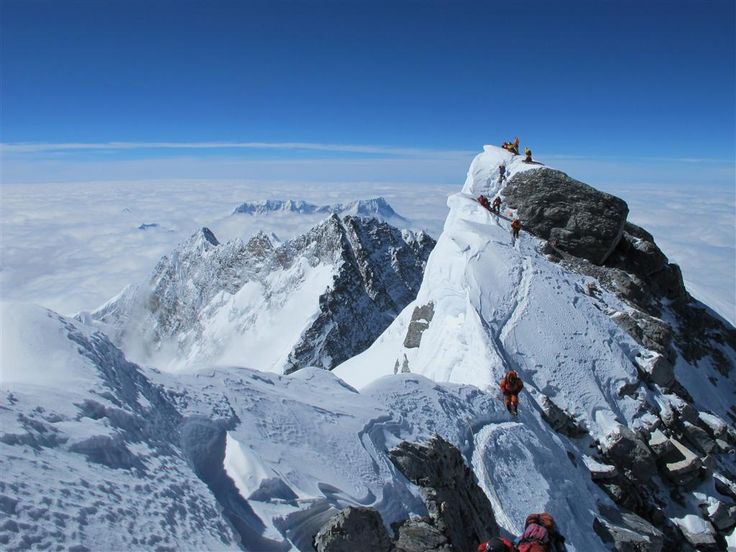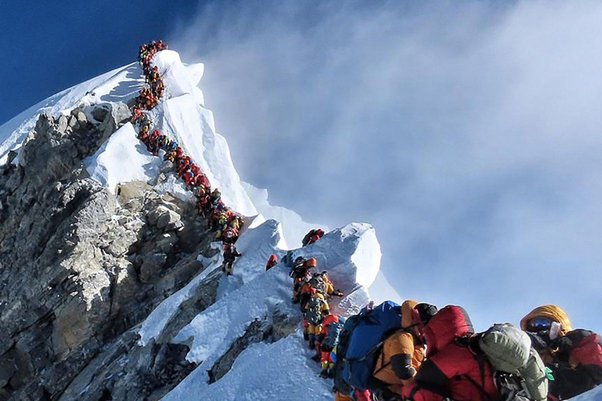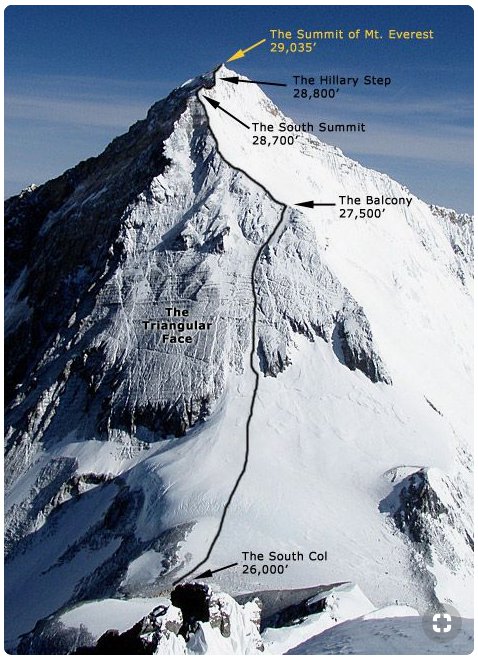There are two base camps on Mount Everest, on opposite sides of the mountains: South Base Camp is in Nepal at an altitude of 5,364 metres (17,598 ft) (28°0′26″N 86°51′34″E), while North Base Camp is in China at 5,150 metres (16,900 ft) ( 28°8′29″N 86°51′5″E).
What is Everest Base Camp? Where is it located?
The Everest Region, also known as the Khumbu Region, lies in the northeastern part of Nepal, specifically within the Solukhumbu District of Koshi Pradesh. Its most remarkable features include the towering Himalayas, breathtaking scenery, and rich cultural heritage. The region is renowned as the most popular destination for trekking and sightseeing on Earth, boasting Mount Sagarmatha, the tallest mountain globally, and a UNESCO World Heritage site. Multiple trekking trails cater to varying physical conditions, offering trekkers an opportunity to immerse themselves in nature’s splendor and experience the majestic 8,848-meter-high Sagarmatha and its surroundings.
The Everest Base Camp Trek stands out as one of the world’s most renowned treks, offering travelers a once-in-a-lifetime opportunity to explore the Khumbu Valley, renowned for its Buddhist monasteries and unique Sherpa culture. The journey includes passing through Sherpa villages, providing insight into their distinctive lifestyles and traditions. Additionally, trekkers encounter a diverse range of landscapes, including other notable peaks like Lhotse, Nuptse, and Ama Dablam, adding to the adventure. The warm hospitality of the Sherpas and Rai people, celebrated for their mountaineering skills and livelihood, enhances the trekking experience, providing trekkers with unforgettable memories.
While trekking in Everest Base Camp offers thrilling experiences and exposure to diverse cultures, travelers must ensure a secure plan regarding travel trails, accommodations, and food. Expedition Himalaya, a veteran Himalayan expeditions provider, prioritizes the safety, comfort, and unforgettable experiences of all clients.
Felis bibendum ut tristique et egestas quis ipsum suspendisse ultrices
When is the best time to visit Everest Base Camp?
The ideal time to trek or visit the Everest Region and its base camp is from March to May and mid-September to November. These periods offer the most favorable seasons for travel, characterized by stable weather conditions, clear skies, and moderate temperatures. Expedition Himalaya ensures that clients are advised to trek during these optimal times to maximize enjoyment and safety.


Why do people trek to Everest Base Camp?
Trekking to Everest Base Camp attracts adventurers seeking challenges in the Himalayas, a chance to witness Mount Sagarmatha’s breathtaking beauty up close, cultural immersion, and the achievement of reaching the base of the world’s highest mountain. The trek offers a visual masterpiece of breathtaking landscapes and a series of stunning sceneries, along with an immersive experience of the Sherpa community’s life and deep-rooted Buddhist traditions. Moreover, trekkers can visit the Sagarmatha National Park, a UNESCO World Heritage site, home to unique flora and fauna adapted to the high-altitude environment.

How long does it take to trek to Everest Base Camp?
Typically, the trek to Everest Base Camp takes around 12 to 14 days for a round trip from Lukla, the nearest airport, to Base Camp and back. This timeframe includes acclimatization days to adjust to the high altitude and reduce the risk of altitude sickness. Expedition Himalaya provides a standard itinerary, but the duration may vary depending on the trekker’s pace and chosen route.
What gear is needed for a trek to Everest Base Camp?
Proper preparation is crucial for trekking to Everest Base Camp to ensure comfort and safety throughout the journey. Essential gear includes a 45-liter backpack, a duffle bag, a water bottle or hydration bladder, a sleeping bag, trekking poles, headlamps, toiletries, a first aid kit, necessary medications, electronics, and sufficient cash.
What are the accommodations like at Everest Base Camp?
Accommodations in the Everest region typically consist of lodging facilities offering basic yet comfortable accommodations. Options include houses, tented camping, and tea houses along the trail, providing hospitable and safe resting places. Rooms are usually twin-sharing with basic amenities, and luxury lodges are available for those seeking a higher level of comfort.
What are the food offerings like at Everest Base Camp?
Food options at Everest Base Camp encompass a variety of dishes ranging from local specialties like daals, lentils, and Sherpa Stew to international fare such as bread, eggs, and pasta. Trekkers are advised to consume carbohydrate and protein-enriched foods to maintain energy levels during the trek. Cultural and Western food options are available, providing a diverse culinary experience amidst the Himalayan landscape.

